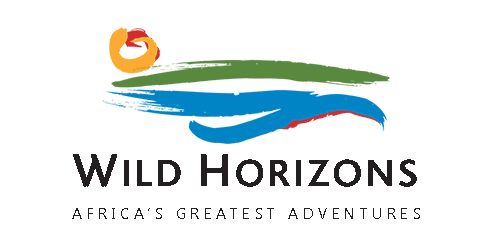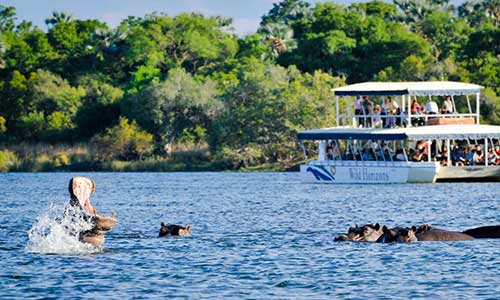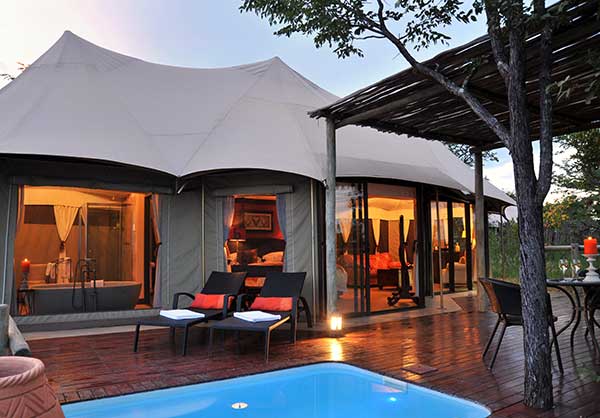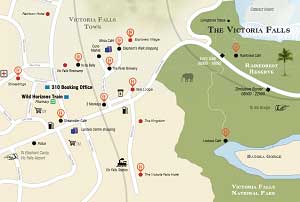Aug 23, 2017 | Family Friendly Activity, High Water, Low Water, rafting, Things to do in Victoria Falls, white water rafting, wildhorizons
For Fun, Just Add Water (Low water vs High water rafting)
Richard Bangs once wrote that wild rivers are the earth’s renegades, defying gravity and dancing to their own tunes. Your first glimpse at the raging rapids that roll and churn down the Zambezi awaken the adventurer inside you, taunting you and seducing you. They beckon with their tremulous arms, teasing with their spurts of white water and daring you with their coiling waves.
The Zambezi is a moving, breathing part of the earth. It is the vein through which life flows and thrusts. Every stroke of your paddle takes you further than a vehicle on the road ever could. They say the first river you raft runs through the rest of your life. It bubbles up in you, the memories swirling like eddies in the pit of your stomach each time you remember it. The Zambezi morphs in shape and stature when the water levels drop or rise, yet each experience is exhilarating in its own way because life is simple- For fun, just add water.

When water levels drop, thrill levels soar. Between August and December, the river seems to be racing itself, plunging furiously between the lips of the gorge, cascading dramatically around very boulder and corner. It toys with the rafts with such precision, that every flip seems pre-meditated. During this time, expeditions begin at rapid number 1, the “Boiling Pot”. You take off from the white water rafting factory- the base of the Victoria Falls. The roar of the river diving down 100 meters of black basalt rock creates an ambience of adventure, purring at your inner adrenaline junkie. If you are after a heart racing, eye widening, and mind blowing rafting trip, then low water is what you need, and you have between August and December to get it.
During the high water seasons (January, February, March, May, June, July), gallons of water crash down the Victoria Falls, streaming into the thirsty gorge, and flooding the rocks and outcrops that form the rapids. When you dip your fingertips in to rippling water, you touch the last of what has gone before, and the first of what is still to come. At these times of the year, the river is more subdued, relaxing after a thunderous low water race. However, the sheer volume of water makes the first ten rapids unrunnable, and thus rafters will only tackle rapid 11 (The Over lander Eater) through to number 23 (The Morning Shave). As the water levels continue to creep higher and higher around March, rafters respectfully leave the Zambezi to her own devices, until they drop again around June.

The Zambezi was designed by the dare devil in Mother Nature, and there is no theme park in the world that could ever compete. Contrary to popular belief, the river is not one long, frothing rapid. The “Devils Toilet Bowl”, “The Stairway to Heaven” and “Mothers Revenge” (just to name a few) spring before you in short, dramatic bursts.
The stretch of water between them is gentle and smooth- the calm  before the storm. They are just long enough to allow you to drink in the incredible scenery and let the sun soak up the water on your skin. The soft slosh of water against the rafts is accompanied by exhilarated shouts and laughs that bounce off the walls of the gorge, as euphoric rafters share their stories and psych up for the next roller coaster. Cruising down this channel of water feels like cruising through a postcard. The most experienced photo editor in the world couldn’t enhance the beauty of the looming gorge stretching to meet the brilliant blue sky. Paddling through an exquisite crevice in the earth, flanked by indigenous flora and passing by inquisitive fauna, is humbling and breath taking in the same moment.
before the storm. They are just long enough to allow you to drink in the incredible scenery and let the sun soak up the water on your skin. The soft slosh of water against the rafts is accompanied by exhilarated shouts and laughs that bounce off the walls of the gorge, as euphoric rafters share their stories and psych up for the next roller coaster. Cruising down this channel of water feels like cruising through a postcard. The most experienced photo editor in the world couldn’t enhance the beauty of the looming gorge stretching to meet the brilliant blue sky. Paddling through an exquisite crevice in the earth, flanked by indigenous flora and passing by inquisitive fauna, is humbling and breath taking in the same moment.
The Zambezi Low Water Rafting Season is finally here! LOW WATER rafting commenced 3 August 2017. Take on the Zambezi with Wild Horizons and the finest crew on the river – Africa’s Greatest Adventures!
Jan 11, 2017 | Author : Jess White, Cuisine, The Elephant Camp, The Elephant Camp Head Chef, The Elephant Camp West, Wild Horizons Staff
Africa is a nation rich in a diversity of flavour, and as Virginia Woolf so adequately said: “One cannot think well, love well, sleep well, if one has not dined well”. The Elephant Camp is committed to providing guests with a delicious cuisine that celebrates our bounty of fresh local produce, ensuring that every meal is an experience to be remembered and revered.
Dean Jones, Wild Horizons’ Executive Chef, based at The Elephant Camp, recognises that food is more than just a meal, but an art in the most delicious form. He believes that “being a chef is an expression of character, passion, creativity and love”. Dean did his culinary training at Silwood School of Cookery in Cape Town, which is highly acclaimed for its three-year Grande Diploma Course. However, it was while watching his mother prepare sweet and savoury snacks for functions as a young boy that his seeds of passion were sown. He soon recognised food as a way of bringing people together and expressing himself through the different flavour profiles in each meal.
During his culinary training, Dean was taught the fundamentals of French Cooking. Throughout his first year, he mastered the techniques that would come to define, and radiate, through his expertly accomplished dishes. During his second year, Dean spent two months in five different kitchen environments, where he gained valuable experience working at several reputable restaurants, including The Conservatory at The Cellars Hohenourt, Myoga Restaurant at the Vineyard Hotel in Claremont, and The Foodbarn in Noordhoek. Dean’s innovative and creative recipe development and food styling skills can be attributed to his time spent with Abigail Donnelly at the Woolworths Taste Magazine.
In the April of 2016, Dean was selected as a semi-finalist out of tens of thousands of chefs from around the world in a global competition called The San Pellergrino Young Chefs Award. Due to this Global competition, at the age of 30, Dean was recognised as one of the worlds ‘up-and-coming’ young chefs.
If food is the body of good living, then wine is the soul. Under the guidance of Chef Margot Janse at Le Quartier Francais’s The Tasting Room in the beautiful Cape Winelands of Franschhoek, Dean gained valuable knowledge about the process of tasting wine, as well as the winemakers themselves. Dean will introduce and execute decadent Wine & Coffee pairings, as well as High Tea & Champagne pairings that are sure to exhilarate our flow of international clientele. Having been motivated by a variety of multi-talented and well-renown chefs, Dean is now striving to be the type of food connoisseur that future diners and chefs are inspired by.
Dean has a passion for pastry that arose while he spent time in his Ouma’s bakery as a young boy. Through his flaky phyllo pastry, tantalising tarts, and buttery crisp croissants, Dean’s freshly baked menu achieves a wow factor in textures, flavours and presentation. American humorist Erma Brombeck was right when she told the world: “Seize the moment. Remember all those women on the ‘Titanic’ who waved off the dessert cart.” It will take a strong-willed person to wave away Dean’s pastry display.
The concept of travelling is infused with the aromas and tastes of each place that we visit, and in order to truly absorb a culture, we need to savour the delicacies that the region has to offer. The meals devised by Dean are well worth travelling for.
Happiness is derived from good food, good music and good wine, all three of which Dean has a well-nurtured passion for. His creativity in the kitchen shapes food artistry that introduces diners to new sensations, cultures and tastes.
“Life is made up of many wonderful, colourful people, and food has a way of bringing cultures, families and friends together. It has the ability to induce nostalgia, calm, healing and peace.” – Dean Jones.
Nov 15, 2016 | Author : Jess White, birding, twitching, Wild Horizons Activites, Wild Horizons Lookout

Anyone who has visited Victoria Falls, intends to visit Victoria Falls or has an interest in visiting this seventh wonder of the world will by now probably have heard of the increasingly popular Lookout Café. It is well known and popular for a number of reasons ….. its delicious food, its stunning location above the Batoka Gorge and its friendly staff to name but a few. Diners at the Lookout Café can observe adrenaline junkies flinging themselves off the gorge on one of the many Wild Horizons High Wire activities, watch the Zambezi River surging below or take in the magnificent spectacle of the Batoka Gorge. What many people don’t realize is that there is also a wonderful opportunity to see Verreaux’s Eagle (also known as the Black Eagle in Southern Africa). This is a great treat for anyone with even the slightest interest in ornithology. This very large eagle (the 6th longest in the world) can often be seen swooping and gliding over the craggy rocks of the gorge in search of hapless hyraxes.
To those who are not too familiar with this magnificent bird of prey, Verreaux’s Eagle is one of the most specialized species of raptors. These birds typically live in hilly and mountainous regions of Southern and Eastern Africa, including our very own Batoka Gorge. The distribution and life history of these birds revolve solely around its favorite food, rock hyraxes, or ‘dassies’ as they are known as locally. When hyrax populations decline Verraux’s Eagles have been known to survive with mixed results on on other species, but considering their highly specialized tastes they have survived the test of time exceptionally well in terms of keeping up their numbers! Their successful survival rate can also be attributed to the fact that they prefer to live in rugged and remote areas. Fortunately it is difficult for humans to destroy rocks and mountains and these areas are generally not favorable to humans so the areas in which these Eagles live have stayed relatively unchanged!
Unlike other eagles with their haunting cries, Verreaux’s Eagles are largely silent, giving no clue to their prey about their whereabouts. The first indication of the presence of one of these incredible Eagles is a flash of black or an ominous shadow cruising past in your peripheral vision. These birds will often hunt in low level flight and catch the rock hyraxes in a fast, twisting dive a few seconds after ‘surprising’ the hyrax. Interestingly, cooperative hunting has also been seen with one eagle in a pair flying past and distracting the prey while the other strikes from behind. ‘Dassies’ are so well camouflaged in their natural environment that we often all we see of them is a brief flash or fur but these Eagles can fly out and return with a kill in just a few minutes.
So the next time you are sitting and relaxing over a delicious meal at the Lookout Café bear in mind that you are in the heart of Verreaux Eagle country. Keep watch amongst the craggy rocks and in the lower levels of the gorge for this large black eagle with its trademark white ‘V’ mark on its back and listen for the silent whoosh of its enormous wings as it too seeks out its own specialized lunch! Written by Libby White
Mar 7, 2016 | Things to do in Victoria Falls, Wild Horizons Activites, wildhorizons, Zambezi river
Wild Horizons is introducing with immediate effect daily scheduled tours of the Victoria Falls; guided in both Spanish and French. These tours take place on the Zimbabwean side of the Falls. They aim to help our many foreign language guests to experience the mighty Victoria Falls and learn about it in their native tongue.
The Spanish and French language tours of Victoria Falls, Zimbabwe are conducted daily throughout the year on a scheduled basis. En route, clients may be taken past the ‘Big Tree’, an impressive baobab, where they may stop and take photos. Clients will be accompanied through the Rainforest by one of our qualified Foreign Language Guides who will give a detailed history of the Falls as well as detailing the flora, fauna, bird & wildlife and other points of interest.
Guides are happy to assist clients with photographs whilst visiting. Raincoats are provided when needed.
The Victoria Falls – Now In Its 150 Millionth Fantastic Year – Reaches Its Zenith In About May each year. It’s a truly awe-inspiring experience. The sight, the sound, the smell; the humbling feeling that here indeed is Nature’s Supreme Masterpiece. No photograph can begin to depict the reality… and nothing prepares you for your first sight.
- DEPART: Daily
- COSTS: No additional cost normal Tour of Falls rates apply
- DURATION: 2 hours
- DEPARTURE: 08h00 to 08h30 from hotels and B&B’s in Victoria Falls Town
- MINIMUM 1 MAXIMUM 20 pax per tour
- LANGUAGE: French or Spanish
- PLEASE NOTE: * Child Policies are available upon request
Jan 13, 2016 | High Water, Low Water, Wild Horizons Activites, Zambezi river
Recently there has been strong concern over the apparent ‘drying up’ of the Victoria Falls- fuelled by sharing of the story on social media. An image taken in Zambia of the apparently dry Victoria Falls was widely circulated and purported to show the Falls as a whole.
However, the large fluctuation of the Zambezi River’s water levels are part of a normal annual occurrence. The huge variation at Victoria Falls is far more than in most of the world’s major waterfalls. The minimum flow, which occurs in November, is on average a mere tenth of the maximum April figure. Source- Wikipedia

Rough Guide to annual water levels showing the general trend of water levels in a typical year. (image courtesy Zambezi Helicopter Company).
This phenomenon means that viewing the waterfall at different times of the year produces vastly different experiences- and it’s definitely worth seeing both. In high flow the entire length of the Falls is a thundering wall of falling water whereas in low water the underlying structure can be seen and visibility is far better. Compare the images below of the Falls in October above and in May below.

The Victoria Falls in low flow

The Victoria Falls in high flow
The Zambezi river, upstream from the falls, experiences a rainy season from late November to early April, and a dry season the rest of the year. The river’s annual flood season is February to May with a peak in April.
The Zambezi River is at its lowest in approximately November or early December in most years. At times of low water the water of the Falls is concentrated mainly towards the Zimbabwean side as that side of the Falls is deeper. As the dry season takes effect up to half of the rocky face of the falls may become dry and the bottom of the First Gorge can be seen along most of its length.

The difference in flow at peak levels varies far more than the flow at low levels.
Currently in January 2016 we are about 15cm below the average water level of the Zambezi river at Victoria Falls at this time of the year. The river started rising on the 13/11/15 which is normal. Since Christmas the river has been rising 1/2cm a day.
In high flow the entire length of the Falls is a thundering wall of falling water. Compare the images below of the Falls in October above and in May below.
Below are some more images of the Falls in past years showing the vast difference in water levels that occur each year.
 before the storm. They are just long enough to allow you to drink in the incredible scenery and let the sun soak up the water on your skin. The soft slosh of water against the rafts is accompanied by exhilarated shouts and laughs that bounce off the walls of the gorge, as euphoric rafters share their stories and psych up for the next roller coaster. Cruising down this channel of water feels like cruising through a postcard. The most experienced photo editor in the world couldn’t enhance the beauty of the looming gorge stretching to meet the brilliant blue sky. Paddling through an exquisite crevice in the earth, flanked by indigenous flora and passing by inquisitive fauna, is humbling and breath taking in the same moment.
before the storm. They are just long enough to allow you to drink in the incredible scenery and let the sun soak up the water on your skin. The soft slosh of water against the rafts is accompanied by exhilarated shouts and laughs that bounce off the walls of the gorge, as euphoric rafters share their stories and psych up for the next roller coaster. Cruising down this channel of water feels like cruising through a postcard. The most experienced photo editor in the world couldn’t enhance the beauty of the looming gorge stretching to meet the brilliant blue sky. Paddling through an exquisite crevice in the earth, flanked by indigenous flora and passing by inquisitive fauna, is humbling and breath taking in the same moment.










